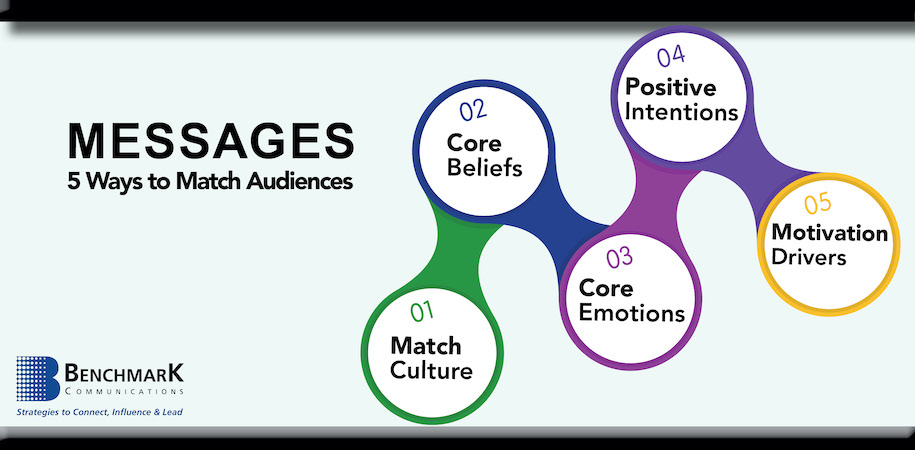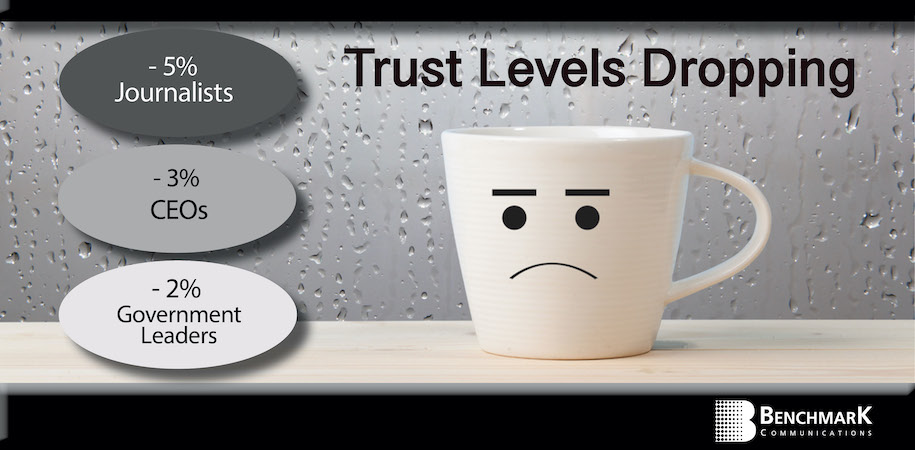Each year people deliver more than 30 million presentations and speeches as part of their work. The most effective presenters and speakers know how to match messages to their audience. In turn, they build trust with their audience. This is important because trust opens doors to opportunities. But a new worldwide poll shows building trust might be harder than ever.
The 2021 Edelman Trust Study was just released and shows public trust levels plunged last year. People now have lower trust levels for government leaders, CEO’s, news media, scientists and even religious leaders. In this environment it is even more important to create messages and presentations that build trust with your audience. The following are five ways you can increase audience trust to increase your influence.
1. Match Culture
Every audience has a unique culture. You might think of culture as the identity of the audience. If you mismatch your audience’s culture, then you risk losing them in the first thirty seconds of your presentation. This is why the best speakers or presentation designers include stories and information that matches the audience culture. The audience needs to know that you really “get” them and that your intention is to honor important elements of their culture. I know a lawyer who was hired to try a case in a small town in rural East Texas. This lawyer was a city boy. He didn’t talk like East Texas. He didn’t look like East Texas and he didn’t think like East Texas. But he knew the importance of matching culture. So, his opening remarks to a jury full of farmers and small-town merchants was a story about spending summers with his grandparents on their East Texas farm. He purposely honored and aligned with their culture.

2. Match Core Beliefs
The second thing an effective presenter thinks about is the audience’s core beliefs. Just because you speak does not mean you will be heard! You must earn permission to be heard and this requires an awareness of beliefs and how they work. If your speech or presentation is full of opposing beliefs, then your audience will shut down their hearing very quickly. They will tune you out! On one hand, you certainly do not want to pretend to agree with their beliefs – when you really do not! But you must at least acknowledge their core beliefs! By doing this you establish agreement, trust and credibility. You are saying that you know what they believe and value, and you respect their right to those beliefs. Think of this as clearing the air. It allows everyone to breath, instead of denying or directly challenging their core beliefs.
“By doing this your establish agreement, trust and credibility.”
For example, let’s say your audience thinks that orange soda is the best, but your goal is to convince them to buy purple soda. To open up their hearing, it would be important for you to first acknowledge how much they like orange soda and why they like it. We call this “creating an agreement frame” to clear the air so they can go on to hear your messages and reasoning behind purple soda.
3. Match Core Emotions
Our team at Benchmark Communications has studied beliefs and emotions for decades. They are key to the communication skills and leadership strategies we deliver to Fortune 500 companies. Over the years we have come to think of emotions as the glue that holds beliefs in place. So, let’s use the above orange vs. purple soda example. Before you speak to the orange soda-loving audience you would need to determine their emotional level on this topic. We usually grade emotions as high, medium, low or neutral. The higher the emotional level, the more work is required to gain rapport and build trust. You have to take steps to acknowledge those emotions. This involves the use of stories and other elements. It also requires a non-verbal delivery that acknowledges their emotional levels.
“You have to acknowledge those emotions. This involves the use of stories and other elements.”
4. Acknowledge Positive Intentions
You should expect your audience to have questions, concerns or outright objections when their beliefs, emotions and perspectives differ from yours. This is why solid messaging requires you to do some strategic audience reconnaissance. Speakers and presenters who do this come across as much more credible and better “on their feet”. You should gather as much audience information as possible to create a comprehensive list of possible concerns your audience might have about your topic. Then, identify the Positive Intentions behind their concerns or objections. This is crucial to ensuring you are fully prepared for anything that comes your way.
5. Identify Motivation Drivers
The best presenters and speakers also know that people have specific preferences on how they give and receive information. We call these motivation drivers. If you are not aware of these drivers, then you tend to default to your own drivers whenever you present and speak. For example, one motivation driver has to do with a preference for moving away from problems versus moving toward goals. A person who prefers to move away from problems will use language patterns that match this preference. They might say, “We have to get this project going so that we don’t fall behind our competitors.” On the other hand, someone with a preference for moving toward goals might say, “Let’s get going on this project so we can outperform our competitors next year.” In short, how you frame key messages determines your success with motivating people! One size does not fit all when it comes to motivating people! Therefore, it is worthwhile to build your awareness of key motivation drivers and incorporate them into your presentations and speeches.
Build Trust With Better Messaging
We live in a world where public trust levels plunged in 2020. People are more skeptical, and this means that if you want to be a more influential presenter and speaker, then you should invest the time required to match your audience. The rewards are great when you learn to create messages that match!
About Benchmark Communications
You can call on Benchmark to help you and your team improve your ability to connect, influence and lead. We offer a range of leadership, communication and reputation management services. So the next time you have a consulting, training or coaching need contact us and let’s talk!


